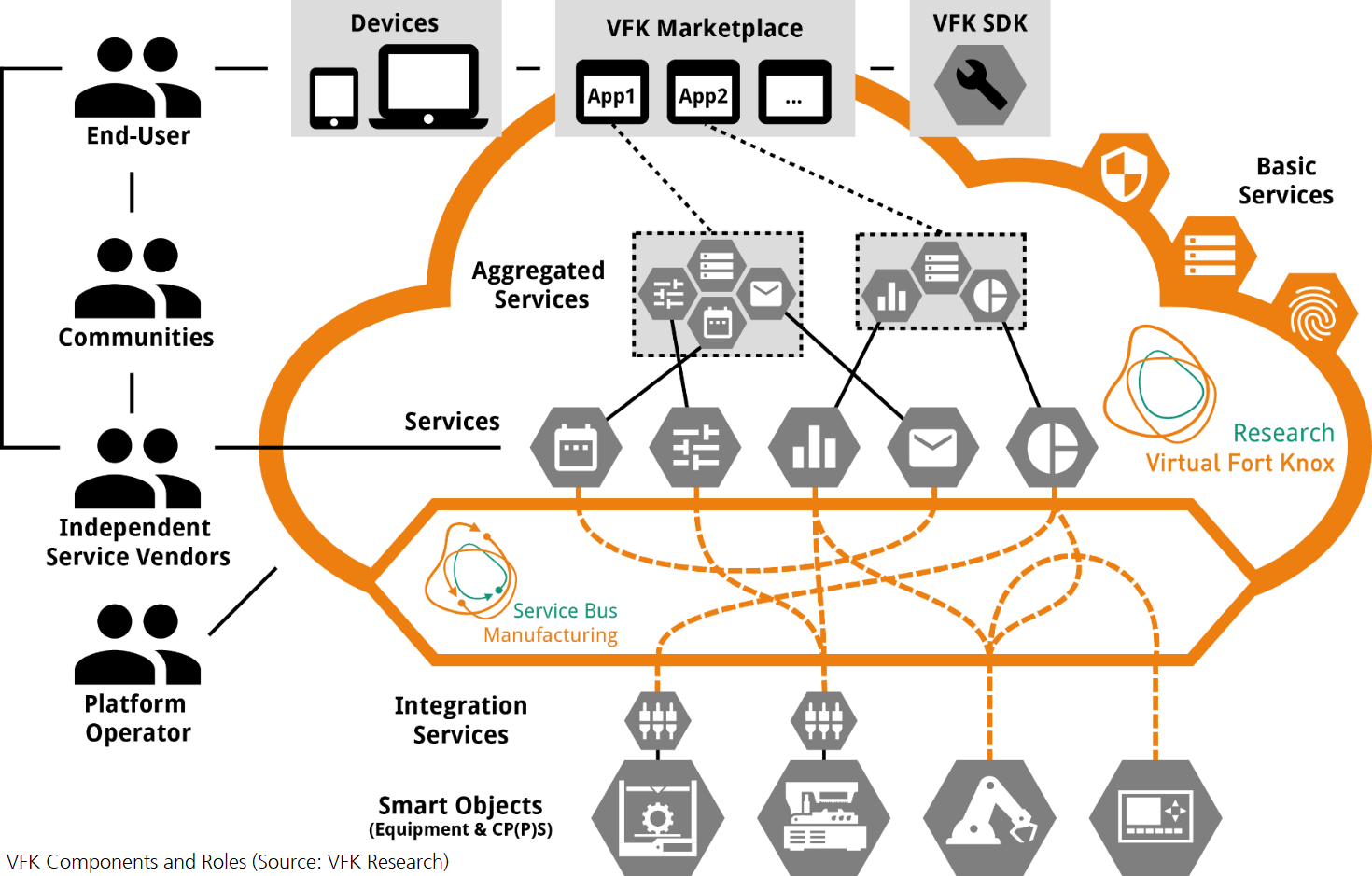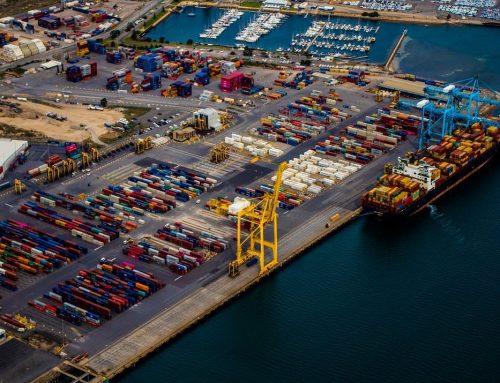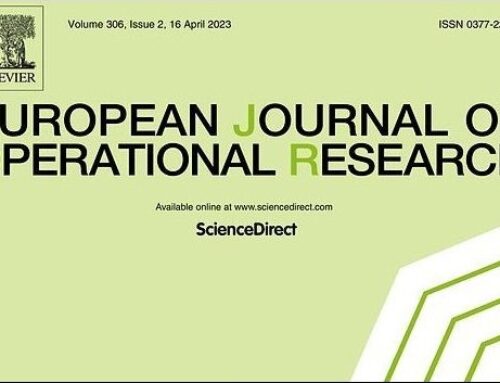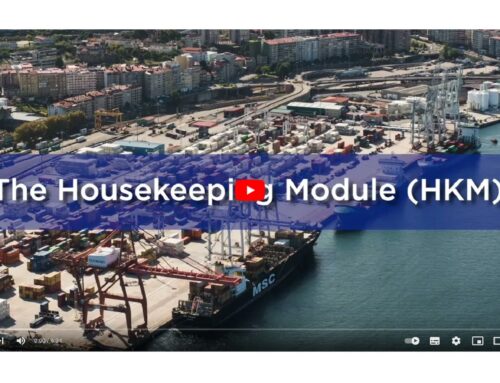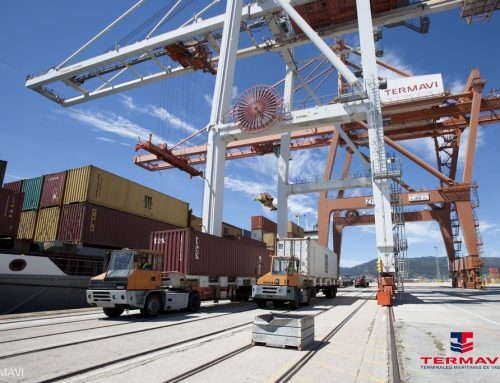Introduction and integration of cyber-physical systems or Internet of Things (IoT) technology in common lead to disruptive changes and increasing complexity for IT solutions in the field of production and logistics. The use of service-oriented architectures can be one possible solution to increase stability, security, reliability, traceability and flexibility. However, due to the lack of security requirements, they are not applied. The VFK platform offers manufacturing and logistics companies a Private Cloud solution within a secure and scalable cloud environment. It allows the integration and connection between different systems like IT infrastructures, Cloud Platforms, cyber-physical systems and digital services by providing a homogenous, service based integration layer called “Manufacturing Service Bus” (MSB). The Virtual Fort Knox platform together with the MSB can operate as a central interface for the connection and integration of different cyber-physical systems and services, which is shown on Figure 1. The following description shows how it is possible to use the Virtual Fort Knox platform within the portforward project to operate services and integrate different systems (sensors, actors, cyber-physical systems, 3rd party port management systems etc.).
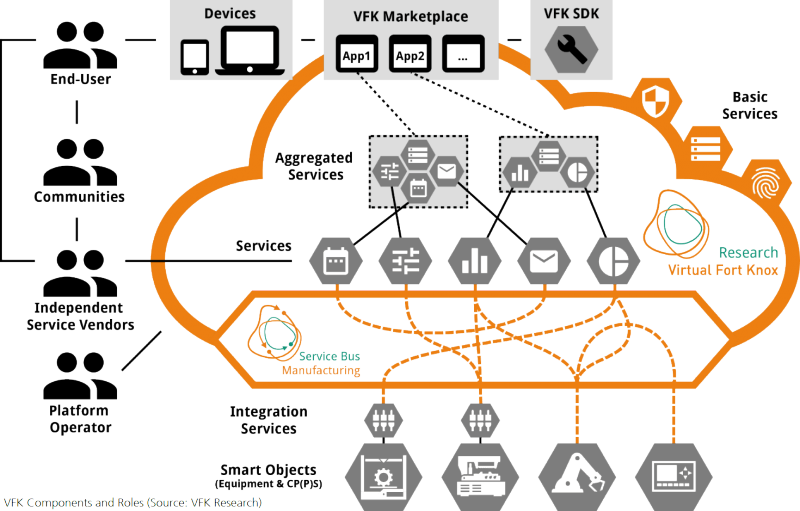
Service Types
According to the Figure above services running on Virtual Fort Knox can be separated into three different types:
- Integration Services
- Services
- Aggregated Services
All three types of services can be deployed based on OO Flows or by the use of Docker images. These three types of service differ in what functionality they implement and how they receive, process, and deliver data.
Integration Services
Integration Services can be used to connect third party systems like sensors, actors, cyber-physical systems in general or the IoT Stack provided by IMEC to exchange data between services and third party systems by using the Manufacturing Service Bus (MSB). The advantage here is obvious: For connecting third-party systems, only one integration service has to be developed, and all other services can access this data via the MSB or make data available.
Basic Services
Basic Services can be used to implement specific applications or functions for transforming, calculating or storing any data. However, the granularity of services should be limited to specific functions or tasks and not represent complex applications. Additionally integrating third party systems is not only limited to Integration Services. It is possible to integrate third party systems by the use of Services without using the MSB.
Aggregated Services
Aggregated Services are used for the implementation of complex functionality or applications like representations of Digital/Virtual Twins, Port Management Applications or Dashboards by integrating or combining different services. These services are mainly published to end users in line with their respective business processes.
Example
The example describes the usage of the REST API in a Service running on the Virtual Fort Knox Platform. The main idea is having basic services offering data from one or more different sources. The aggregated services using these basic services do not have any information about the source of the data as well as they have to take care about any data format. Another fact is that the basic services can aggregate data from different operations/event sources of the IoT stack REST API. This allows to offer services or applications providing analyzed and/or aggregated data which is based on simple sensor data. The following example shows how to use the data from the IoT stack providing information about trucks or vehicles passing gates. These gates are defined for incoming trucks (Gate0) and leaving trucks (Gate1). At a first step two basic services are defined providing information about passing trucks at each gate. An aggregated service uses these two basic services to calculate which vehicles/trucks are currently on the area by analyzing at first the data from the service providing the entering and next the service providing the leaving of the port area.
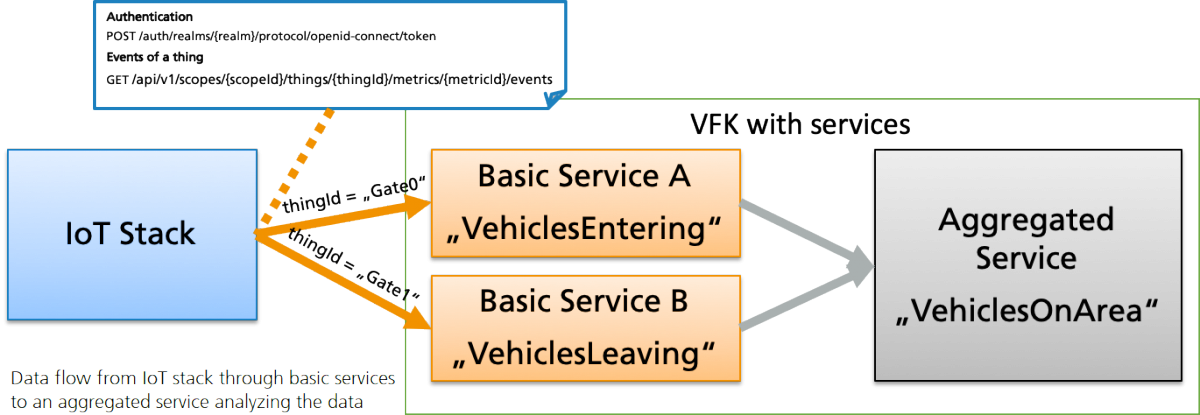
The second figure shows the data flow from the IoT stack through the basic services to an aggregated service, which analyzes the data of both connected basic services to calculate which truck or vehicle is currently on the port area. This aggregated service can be used to display the current status or number of trucks or vehicles currently staying on the port area on a dashboard.

